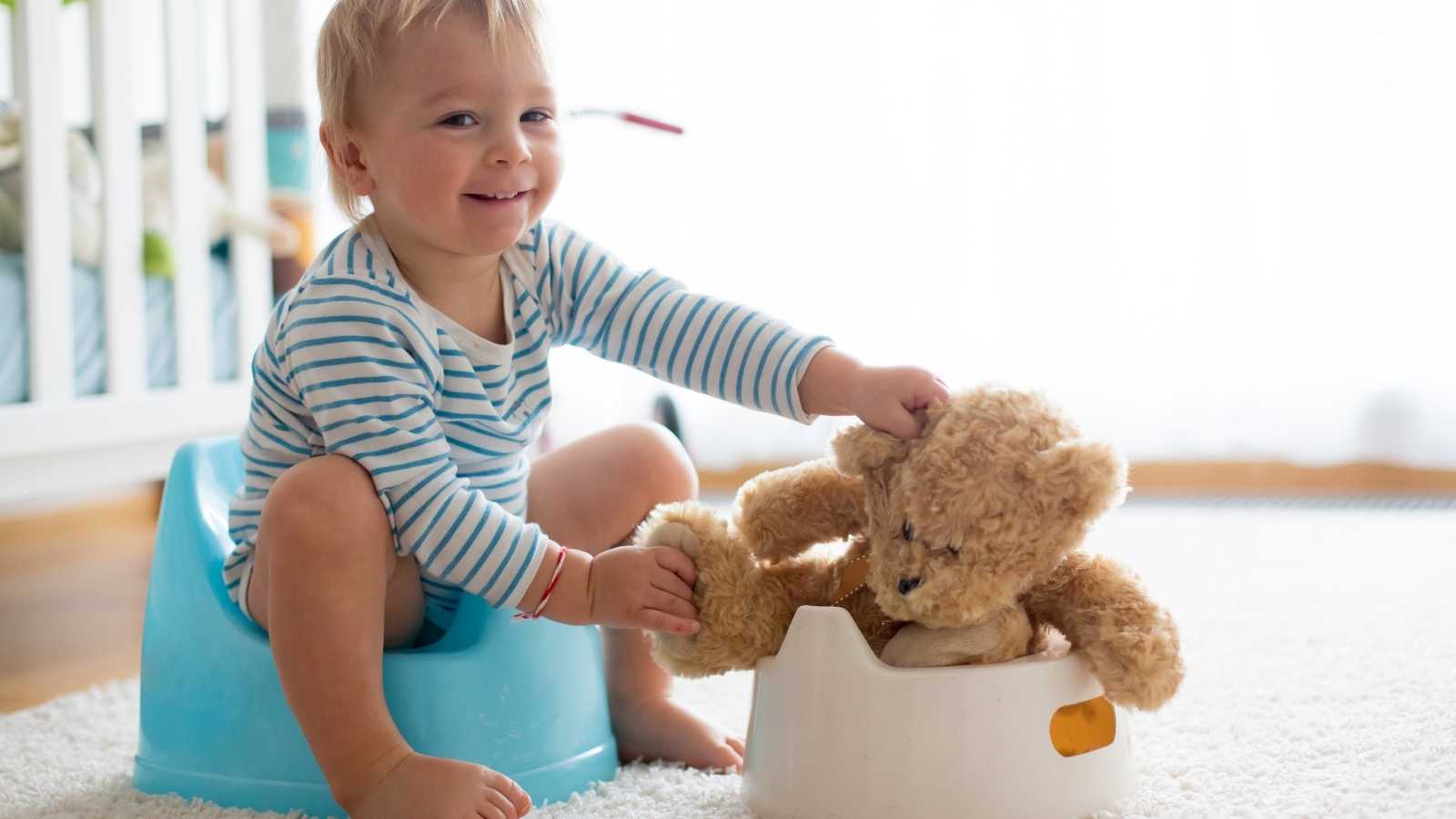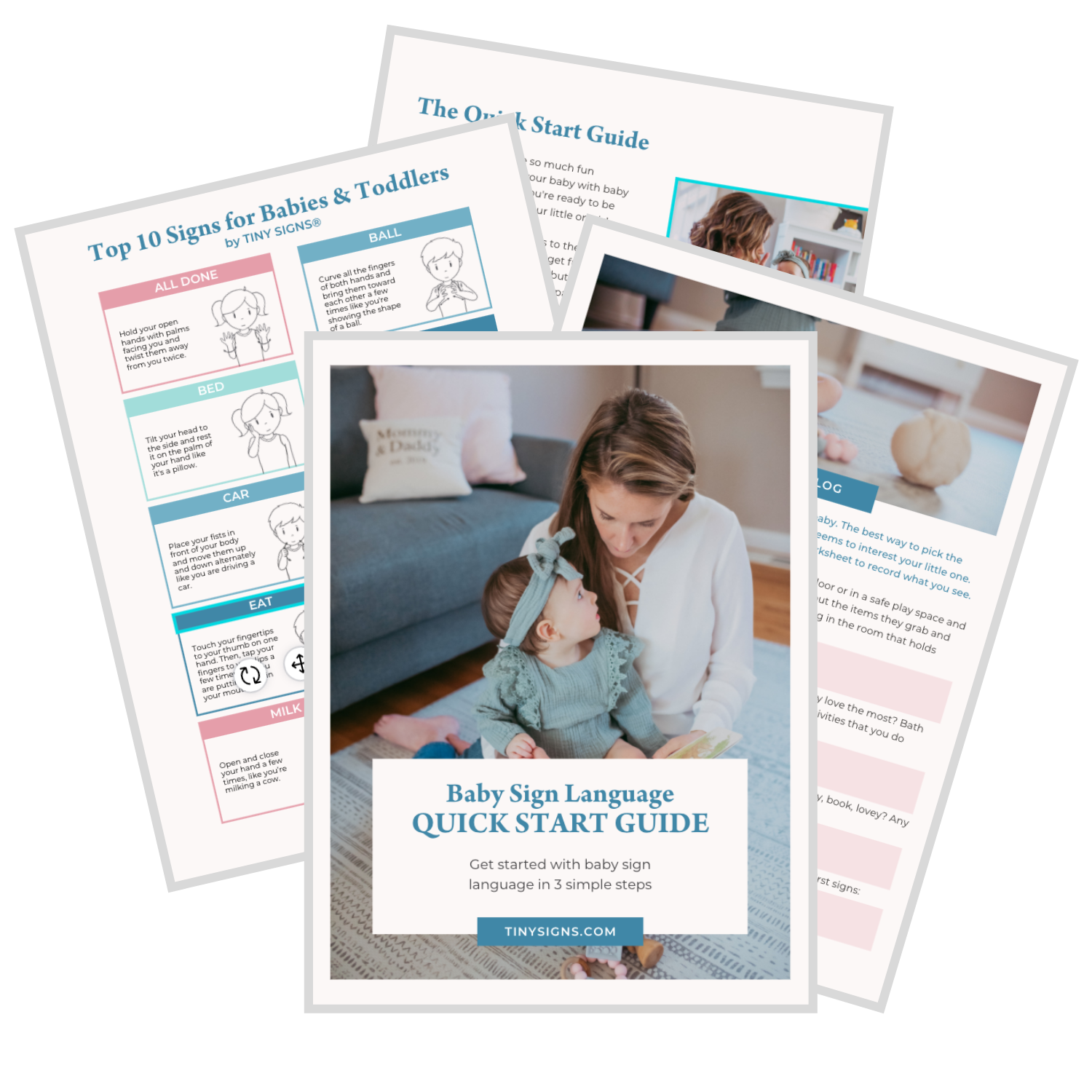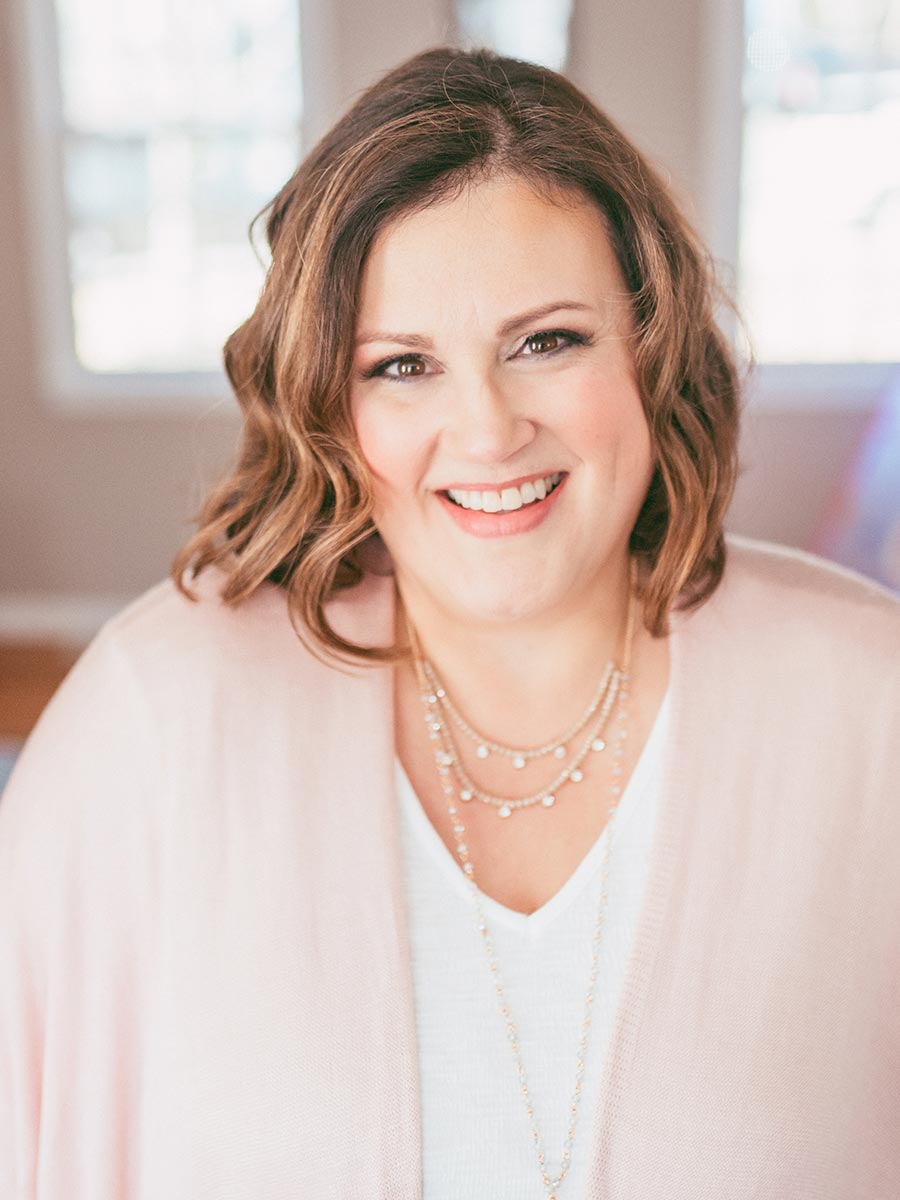Potty Training? 8 ASL Signs you need to know
Let me start by saying that I’m no potty training expert (although I did manage to get both of my kids out of diapers so #yay). And while I might not be a potty training guru, one thing I DO know a lot about is using sign language as a communication tool for infants and toddlers. And when it comes to potty training, communication is key. Toddler speech varies greatly from one kiddo to the next, so if you’ve got a toddler with a large vocabulary who’s easy to understand, then you might not need to use signs when potty training. Many toddlers, however, are still working on building their vocabulary – and those early words can be really hard to understand. If that sounds like your little one, you’ll find the information in this article really helpful!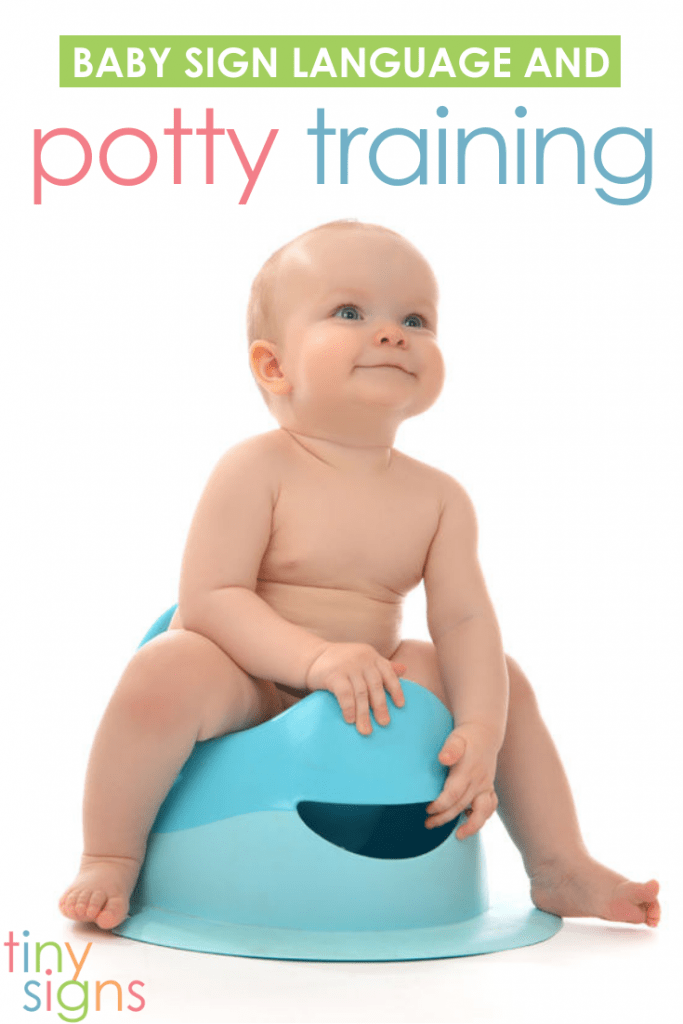
When to Potty Train
Before the use of disposable diapers, babies in the United States were usually potty trained in the 12-18 month range. That’s understandable when you think of washing all those cloth diapers by hand! But as disposable diapers became increasingly popular in the 1960’s and 1970’s, the average age of potty training has crept up to 2.5 years, and even later. Among my early parenting peers [circa 2006], it was definitely the norm to start thinking about potty training around age 2 or so, with a goal to be done by age 2.5 or 3. These days, savvy parents are realizing that the disposable diaper industry is the biggest benefactor of waiting to potty train, and these smart millennials are starting to potty train earlier to minimize damage to the environment (not to mention their wallets!). However, potty training earlier on means your little one might still be developing his speech skills, which can make communicating about when to go a little tricky.How Baby Sign Language Can Help with Potty Training
As parents and caregivers seek to start potty training before their little ones’ second birthday, one of the biggest challenges can be communication. Most babies might be saying a few words around their first birthday and might have a vocabulary of up to 50 words by 18 months. Their verbal articulation may still be quite limited and often difficult to understand. In fact, you might only understand about 50% of what your toddler is saying! Communication is an essential part of the potty training process. This limited ability to talk can make potty training even more challenging. Your little one needs to be able to let you know when he’s got to go!Enter Sign Language
Using basic signs is the perfect way to bridge the language gap with your toddler. Teaching your little one how to sign “potty” will allow her to let you know it’s time to go! Another cool bonus for teaching your toddler the sign for “potty” is that it’s quiet and doesn’t involve them shouting their need to poop for the whole grocery store to hear. Nice, right?Potty Training Signs to Start With
The most obvious sign to start with is the sign POTTY. It’s pretty easy, as you’ll see in the video below. If your kiddo is a little older, and you want to be more specific, you can also teach them the signs for PEE and POOP, but most families find that the sign for POTTY alone does the trick. The following video will show you how to sign POTTY, PEE and POOP. After that, you’ll find videos for other signs that might come in handy, like CHANGE, DIAPER, DIRTY, CLEAN and ALL DONE.How to Sign POTTY, PEE & POOP in ASL
How to Sign CHANGE, DIAPER, DIRTY, CLEAN and ALL DONE in ASL
Click through the videos to see how to do a few more signs that might come in handy when potty training…The Best Potty Training Book
As I mentioned before, I’m no potty training expert. But thank goodness I know someone who is! My friend, Jamie Glowacki, is a potty training ninja and all-around rock star. She’s also the author of the bestselling potty training book Oh Crap! Potty Training: Everything Modern Parents Need to Know to Do It Once and Do It Right. So if you’re looking for guidance on how to potty train your little one, I definitely recommend picking up her book. She knows her stuff!
You Can Do It!
Now you know the most useful signs to help get your little one communicating during the potty training journey. You’ve also got a great book recommendation for best practices on potty training, as well as an insider tip on how to put a real expert on speed dial. You’ve got everything you need to succeed. You’ve got this!Got More Hot Tips?
If you’ve got a great potty training tip to share, please share them in the comments below. I’d love to hear what’s worked for you!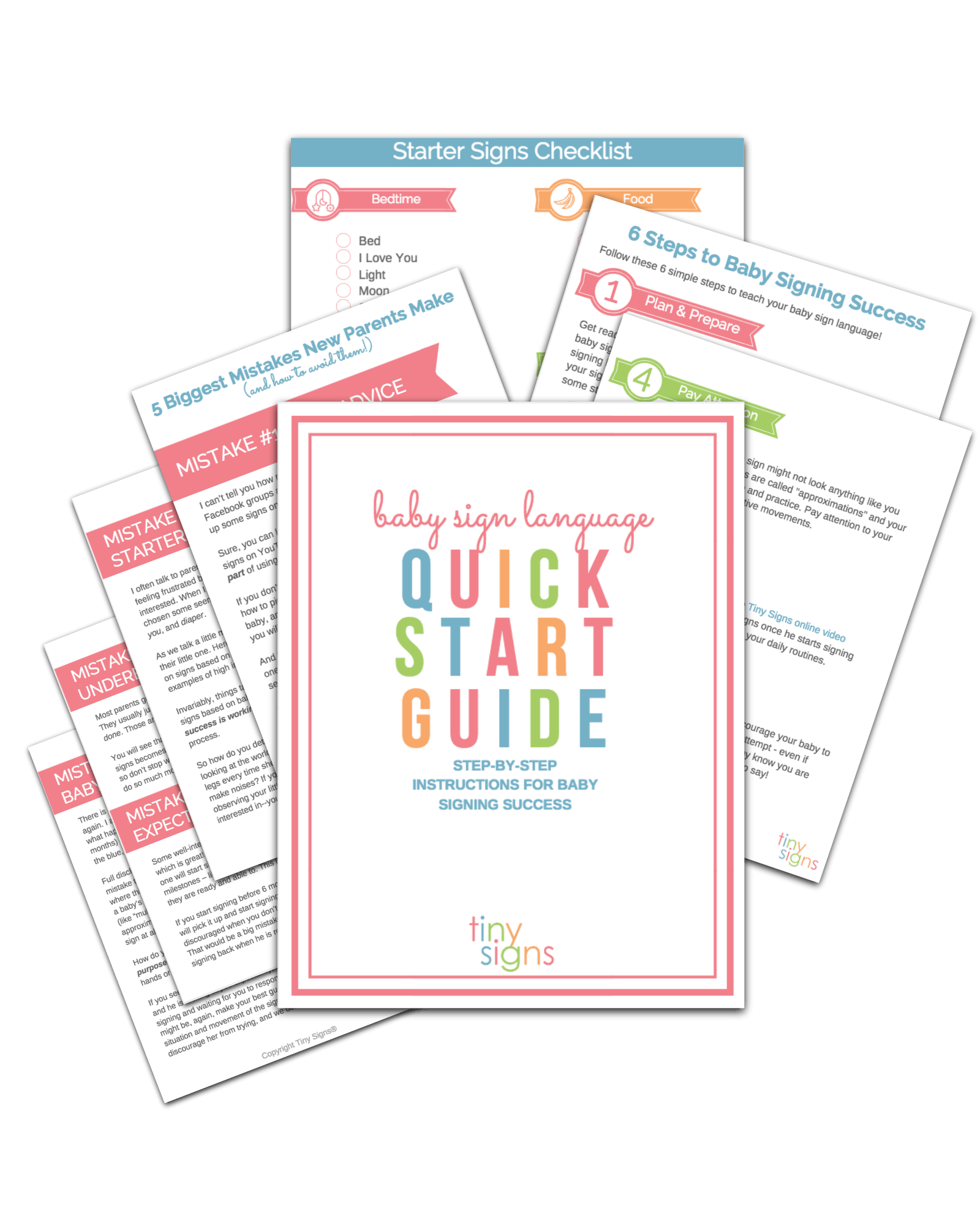
Subscribe to Get the FREE Quick Start Guide!
Subscribe to the Tiny Signs newsletter and get free tips & advice via email. You'll get the FREE Baby Sign Language Quick Start Guide delivered straight to your inbox as a special thank you for signing up!

